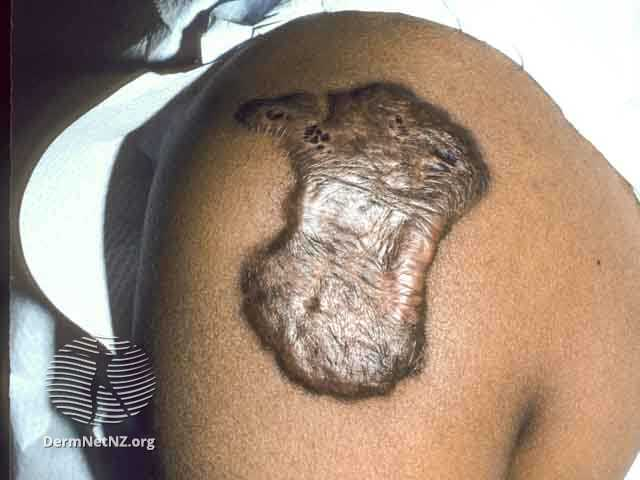One option is to achieve most wound healing by the use of general-purpose tissue scaffolding gel (in fiction, ususally called Omnigel).
This is actually an idea that we are slowly putting into practice IRL. Spray scaffolding foam into a wound, fill it with extra nutrients, collagen, stem-cells and growth enhancers, and the body will spread its cells into it, filling the scaffold.
We already managed to "print" hearts and livers that way, and even produced some skin.
The problem is: if the cells grown through and over a scaffold of quickly applied foamy gel, the resulting tissue will look not better than the blob of scaffolding itself, a gnarly patch of flesh visibly different than the rest. Its the equivalent of having your wound filled with insulation foam that then magically changes into meat.
Flesh can be regrown fast, or it can be regrown properly, but not both at the same time.
What that means, is that if your future soldier, cyberpunk cop or a warrior gets severely injured, they can almost certainly save their life by filling the wounds with omnigel foam, at the cost of making them look like Frankenstein.
This applies double for anyone with cybernetic implants.
If you want a robot hand, well, the connection point will be basically built out of omnigel scaffolding, so that regeneration outpaces implant rejection, which means it will look like melted Plasticine.

